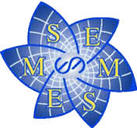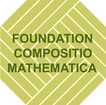|
RESEARCH SCHOOL / ECOLE DE RECHERCHE
Buildings and Affine Grassmannians Sophie Morel (Princeton University) Organizing Committee
Comité d’organisation Florence Fauquant-Millet (Université Jean Monnet, Saint Etienne) |
|
The chosen theme for this summer school is at the cross between Algebraic Geometry and Representation Theory.
The aim of the summer school is to gather young researchers arising from a quite wide mathematical area in order to build knowledge in two complementary fundamental theories. The first one is Bruhat-Tits theory which deals with the Euclidean buildings and integral models of reductive algebraic groups defined over a local field, the second one is the theory of Affine Grassmannians which are geometric objects arising from Representation Theory. The applications to the Langlands program (in particular the geometric one) will appear along the way. In short, the summer school will gather 80 people during two weeks. Priority will be given to graduate students and to doctors who defended their Phd after 2015. Five lectures of 6 hours will be given by internationally recognized experts. Two lectures will be about Bruhat-Tits theory, two lectures will present the theory of Affine Grassmannians from the representation theory viewpoint and an advanced lecture will focus on the geometric Langlands program. Furthermore there will be a daily question session where the public may ask the lecturers. Finally there will be two talks each day, one explicitely related to the lectures and one research talk. |
Le thème retenu pour cette école d’été est au croisement de la géométrie algébrique et de la théorie des représentations.
Le but de cet école d’´été est de rassembler de jeunes chercheurs sur une base thématique assez large afin d’acquérir des connaissances dans deux théories fondamentales complémentaires, d’une part la théorie de Bruhat-Tits qui traite des immeubles affines et des modèles entiers de groupes réductifs définis sur un corps local, d’autre part, la théorie des grassmaniennes affines qui sont des objets géométriques provenant de la théorie des représentations. Les applications au programme de Langlands, notamment géométrique, apparaîtront au fur et à mesure. En quelques mots, l’´école d’été regroupera 80 personnes pendant deux semaines. La priorité sera donnée aux doctorants et aux personnes ayant soutenu leur thèse depuis 2015. Cinq cours de 6 heures seront donnés par des spécialistes renommés, deux sur la théorie de Bruhat-Tits, deux sur la théorie des grassmaniennes affines, le cinquième cours, plus avancé, portant sur le programme de Langlands géométrique. De plus, il y aura chaque jour une séance de questions afin que le public puisse interpeller les enseignants, et deux exposés (un en complément de cours, un de recherche). |
|
WEEK 1
|
|
WEEK 2
|
The goal of this lecture is to present the construction of the Bruhat-Tits buildings attached to a quasi-split (that is admitting a Borel subgroup) semisimple group G defined over an henselian discretly valued field K and also the construction of the parahoric group OK–schemes parametrized by the points of the buildings. The building part is [BT1] and the group scheme part corresponds to the four first sections of [BT2] but could also be treated by Yu’s method [Y] namely by using Raynaud’s theory of group schemes [BLR].
Bruhat-Tits theory applies to a semisimple group G, defined over an henselian discretly valued field K, such that G admits a Borel K-subgroup after an extension of K. The construction of the theory goes then by a deep Galois descent argument for the building and also for the parahoric group scheme.
In the case of unramified extension, that descent has been achieved by Bruhat-Tits at the end of [BT2]. The tamely ramified case is due to G. Rousseau [R]. Recently, G. Prasad found a new way to investigate the descent part of the theory. This is available in the preprints [Pr1, Pr2] dealing respectively with the unramified case and the tamely ramified case. It is much shorter and the method is based more on fine geometry of the building (e.g. galleries) than algebraic groups techniques.
Gopal Prasad is Professor in University of Michigan. His research topic is algebraic groups and arithmetic groups.
The aim is to give an introduction to the basic theory of affine Grassmannians and affine flag varieties. We put special emphasis on the utility of dynamic methods in sense of Drinfeld [D], and the utility of non-constant group schemes. We plan to adress the following aspects :
• Affine Grassmannians as moduli spaces of G-bundles, and as quotients of loop groups ;
• Cell decompositions of affine Grassmannians and affine flag varieties via dynamic methods : Iwahori, Cartan and Iwasawa decompositions ;
• Schubert varieties, Demazure resolutions, Convolution morphisms, Combinatorial structures ;
• Moduli spaces of G-bundles with level structure versus bundles under non-constant group schemes ;
• Beilinson-Drinfeld type deformations of affine Grassmannians ;
• Relation to the local geometry of moduli spaces of Drinfeld shtukas and Shimura varieties.
Timo Richarz is Assistant Professor at TU Darmstadt, Germany. His research area is algebraic geometry and the Langlands program.
One of the most important applications of the affine Grassmannian is the geometric Satake equivalence which claims that, if G is a complex connected reductive group, the Satake category of G, i.e. the category of G(C[[t]])– equivariant perverse sheaves on the affine Grassmannian of G, with coefficients in a commutative Noetherian ring k of finite global dimension, is equivalent to the category of finitely generated representations of the split connected reductive group over k which is Langlands dual to G. This equivalence is important because on one hand it gives a geometric description of the category of representations of any reductive group, and on the other hand because it gives a “concrete” construction of the Langlands dual group in terms of the original group. These lectures will provide an overview of the proof of this equivalence by Mirković-Vilonen [MV], and describe recent developments related to the description of the tilting objects in the Satake category. These lectures will be based in particular on [BR].
Simon Riche is Professor at University of Clermont-Ferrand Auvergne, his research area is representation theory.
The geometric Satake equivalence can be regarded as a categorification of the classical Satake isomorphism. In this lecture series, I will discuss a general decategorification process, known as the categorical trace construction, and apply this construction to the geometric Satake equivalence. Shtukas appear naturally in the construction, and surprisingly, this decategorification process gives more information than the classical Satake isomorphism and has significant arithmetic applications to the classical Langlands program. Time permitting, I may also discuss this construction for Bezrukavnikov’s equivalence.
There are 18 talks planned. There will be given mainly by young lecturers (up to Phd +4) and the organization committee has in mind parity issues. Based on the propositions of the main lecturers, there should be talks which illustrate the main lectures, discussing examples, applications, etc. For example, concerning Bruhat-Tits theory, that could lead to the Berkovich analytic viewpoint on the theory or the case of pseudo-reductive groups. On the affine grassmannianns side, it would be of interest to present Fedorov’s construction of exotic G–bundles over affine spaces [F].
The other talks will be research talks and the invitations decided by both committees. People are explicitely encouraged to apply for giving a talk on the website of the summer school.
[BLR] S. Bosch, W. Lütkebohmert, M. Raynaud, Néron models, Ergebnisse der Mathematik und ihrer Grenzgebiete 21 (1990), Springer.
[BT1] F. Bruhat, J. Tits, Groupes réductifs sur un corps local. I. Données radicielles valuées, Inst. Hautes Etudes Sci. Publ. Math. 41 (1972), 5–251.
[BT2] F. Bruhat, J. Tits, Groupes réductifs sur un corps local. II. Schémas en groupes. Existence d’une donnée radicielle valuée, Inst. Hautes Etudes Sci. Publ. Math. 60 (1984), 197–376.
[D] V. G. Drinfeld : On algebraic spaces with an action of Gm, preprint (2013).
[F] R. Fedorov, Affine Grassmannians of group schemes and exotic principal bundles over A 1 , Amer. J. Math. 138 (2016), 879-906.
[Ga] D. Gaitsgory, Progrès récents dans la théorie de Langlands géométrique, Séminaire Bourbaki, Exp. No. 1109, vol. 2015/2016, Astérisque No. 390 (2017), 139-168.
[MV] I. Mirković, K. Vilonen, Perverse sheaves on affine Grassmannians and Langlands duality, Math. Res. Lett. 7 (2000), 13-24.
[Pr1] G. Prasad, A new approach to unramified descent in Bruhat-Tits theory.
[Pr2] G. Prasad, Finite group actions on reductive groups and buildings and tamely-ramified descent in Bruhat-Tits theory,
[R] G. Rousseau, Immeubles des groupes réductifs sur les corps locaux Publications mathématiques d’Orsay 130 (1977).
[Y] J.-K. Yu, Smooth models associated to concave functions in Bruhat-Tits theory, Autour des schémas en groupes. Vol. III, 227–258, Panor. Synthèses 47, Soc. Math. France, Paris, 2015.







